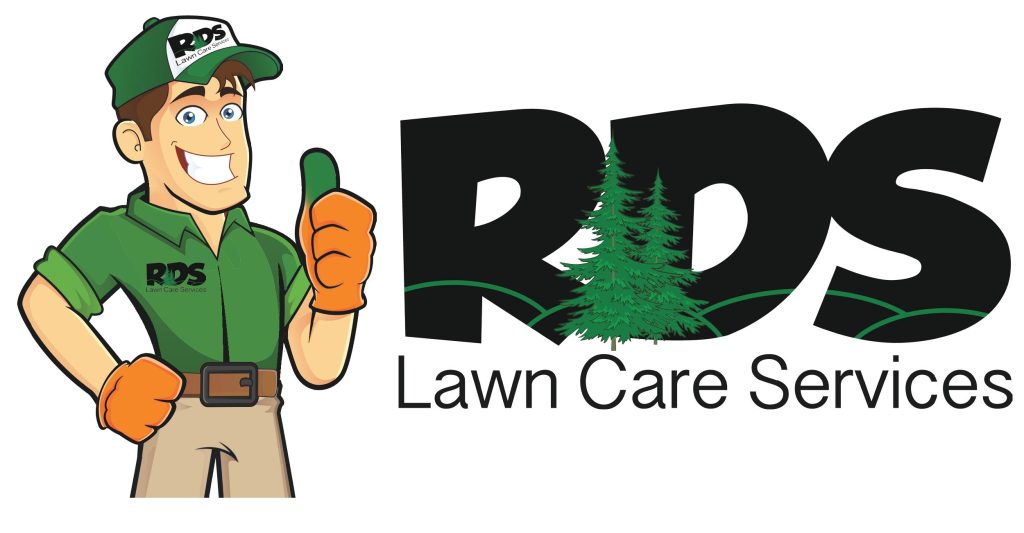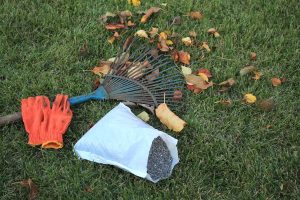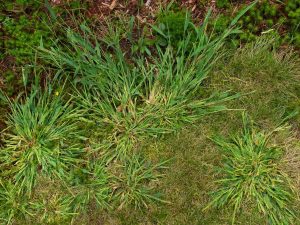What Is a Devil’s Strip in Your Lawn?
If you’ve ever struggled to grow grass in that narrow patch of land between the sidewalk and the street, you’re not alone—and that tricky area has a name: the devil’s strip.
In landscaping terms, the devil’s strip refers to the strip of grass between the curb and the sidewalk (or driveway). It might look like a small part of your lawn, but it’s often the hardest to maintain. By mid-summer, these areas are dry, compacted, full of weeds, and sometimes bare altogether.
At RDS Lawn Care Services, we work with homeowners throughout Gaston County, NC, including Mount Holly, Belmont, Gastonia, and surrounding areas, to restore these problem areas. Understanding why devil’s strips are so difficult is the first step toward fixing them.
Why Do Devil’s Strips Have Such a Bad Reputation?
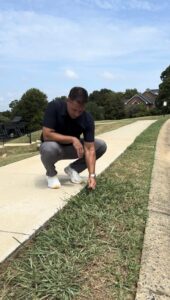
The name “devil’s strip” didn’t come from nowhere. These areas are notoriously challenging to maintain because they face some of the harshest lawn conditions possible.
Here’s why they struggle:
1. Extreme Heat
Concrete and asphalt absorb and radiate heat all day long. During summer in Gaston County, surface temperatures on nearby pavement can exceed 110–120°F. The small strip of soil between them bakes in that radiant heat, drying out faster than the rest of your lawn.
2. Poor Soil Quality
When neighborhoods and sidewalks are built, devil’s strips are often filled with leftover construction soil. It’s usually compacted, rocky, and low in nutrients—hardly ideal for growing healthy grass.
3. Limited Root Depth
Because of compaction and poor soil structure, grass roots can’t grow deeply in these areas. Shallow roots make grass more susceptible to drought, weeds, and heat stress.
4. Irrigation Challenges
Most irrigation systems don’t cover the devil’s strip effectively. The sprinklers may miss these narrow areas altogether, leaving them thirsty during the hottest months.
5. High Traffic and Stress
Devil’s strips get trampled by pedestrians, pets, and vehicles pulling up to the curb. Salt from winter road treatments or chemical runoff from driveways also damage the grass.
Why Your Devil’s Strip Turns Brown (and What It’s Telling You)
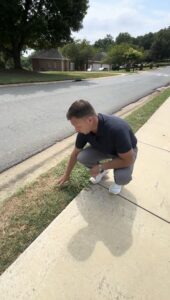
By July or August, many Gaston County homeowners notice that their devil’s strip has turned yellow or brown—even when the rest of the lawn looks great. That’s a sign the soil is too hot and too dry.
When soil temperatures rise above 85°F, root growth slows dramatically. Combined with compacted soil and limited moisture, grass simply can’t survive in those conditions. Weeds, on the other hand, thrive in compacted, dry soil, which is why devil’s strips often fill with crabgrass, dallisgrass, or other hardy invaders.
The good news? With the right combination of soil improvement, aeration, and seeding, even these challenging areas can be restored.
How to Fix a Devil’s Strip
At RDS Lawn Care Services, we’ve helped hundreds of homeowners in Gaston County bring their devil’s strips back to life. Here’s the step-by-step approach we recommend:
1. Remove Weeds and Dead Grass
Start by clearing out the area completely. Kill off existing weeds and unhealthy turf with a nonselective herbicide. This allows you to start fresh and prevents aggressive species like Bermuda grass from coming back.
2. Loosen and Enrich the Soil
Once the area is clear, it’s time to improve the soil. The devil’s strip is often compacted, so aerating the soil—or even replacing the top few inches with quality topsoil—can make a huge difference. Adding compost or organic matter helps boost nutrients and moisture retention.
3. Aerate the Area Thoroughly
Core aeration is one of the most effective ways to relieve compaction and encourage healthy root growth. By pulling plugs from the soil, aeration improves airflow, water absorption, and nutrient movement—all essential for growing strong turf.
4. Choose the Right Grass Seed
For Gaston County lawns, fescue is the top choice for devil’s strips because it’s durable and tolerant of both heat and shade. In some cases, turf-type tall fescue or hybrid blends offer even greater drought resistance.
5. Fertilize and Water Properly
Once seeded, apply a starter fertilizer to help with root development. Water lightly but frequently at first, keeping the soil consistently moist during germination. After the grass is established, transition to deeper, less frequent watering—about two to three times per week.
6. Add a Mulch or Border Edge
For devil’s strips that still struggle due to extreme heat, consider creative alternatives like mulch borders, decorative gravel, or low-maintenance groundcover plants. This can reduce maintenance while keeping curb appeal high.
Why Fall Is the Best Time to Renovate a Devil’s Strip
If you’re planning to repair your devil’s strip, fall is the best time of year to do it, especially in the Gaston County region.
During fall, temperatures are cooler, rainfall is more consistent, and weeds are less aggressive. This creates ideal conditions for aeration, seeding, and fertilization.
When you seed in the fall, your new fescue grass has months to establish before summer heat returns. By the time next July rolls around, those deep roots will help your lawn withstand the toughest conditions.
Pro Tips for Maintaining a Devil’s Strip
To keep your devil’s strip looking good long after renovation, follow these maintenance tips:
✅ Water Deeply but Infrequently
Overwatering creates shallow roots, while infrequent deep watering encourages roots to grow downward. Water two to three times per week for best results.
✅ Fertilize at the Right Time
Apply a balanced fertilizer in the fall and again in spring to keep the turf thick and healthy.
✅ Aerate Annually
Annual aeration keeps the soil loose and prevents compaction from returning.
✅ Keep Mowing Height High
Taller grass provides shade for the soil, helping retain moisture and reduce heat stress in the devil’s strip.
✅ Watch for Heat Stress and Weeds
If your devil’s strip begins to thin out or develop weeds, address it quickly. Preventive care is easier than full renovation.
Why Professional Help Makes the Difference
Fixing a devil’s strip isn’t just about planting new seed—it’s about solving the underlying soil and heat problems. That’s where a professional lawn care provider like RDS Lawn Care Services comes in.
We specialize in turf renovation throughout Gaston County, using science-backed lawn care methods to rebuild even the toughest areas. Our team focuses on:
-
Core aeration and overseeding for compacted soil.
-
Customized fertilization programs for heat-stressed lawns.
-
Weed control to prevent invaders from taking over.
-
Turf management strategies tailored to North Carolina’s unique climate.
Whether your devil’s strip is thin, patchy, or completely bare, we can help you restore it into a green, uniform extension of your lawn.
The RDS Lawn Care Difference
At RDS Lawn Care Services, we understand that every part of your yard matters—even the small strip between your sidewalk and the street. Our goal is to create healthy, resilient turf across your entire property through professional lawn fertilization, aeration, seeding, and weed control programs.
We proudly serve homeowners throughout Gaston County, NC, including Mount Holly, Belmont, Gastonia, Cramerton, and surrounding communities.
When you partner with RDS, you’re not just getting lawn treatments—you’re getting a team of experts committed to helping you build and maintain a lawn you’ll love year-round.
RDS Lawn Care Services – Gaston County, NC Lawn Care Experts
Proudly serving Mount Holly, Gastonia, Belmont, Cramerton, and surrounding areas.
📞 Call us today at 704-822-1625 to schedule your lawn care program.
RDS Lawn Care Services – Saving Lawns Since 1996.
